by Editor | Oct 20, 2008 | Luxury Travel, New Articles
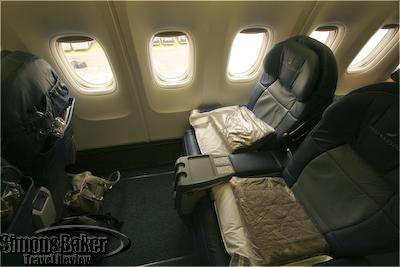
Delta’s BusinessElite seats on a trip to South Africa
When Delta began offering direct service from the United States to South Africa, we thought the American carrier’s entry into those international skies would drive the quality of the route up prompting others to push their service to a higher standard.
The airline’s reputation for friendly and efficient service and its extensive operations with increasingly broad international reach made us think Delta would deliver a better than average or even an excellent product, especially in the usually profitable business category.
Instead, Delta’s BusinessElite service on that route was significantly below our expectations. It was the worst travel experience we have encountered aboard that large carrier. Click here to read a dedicated feature on Delta BusinessElite service from the United States to South Africa.
by Editor | Oct 13, 2008 | Accomodations, Luxury Travel, New Articles
By Elena del Valle
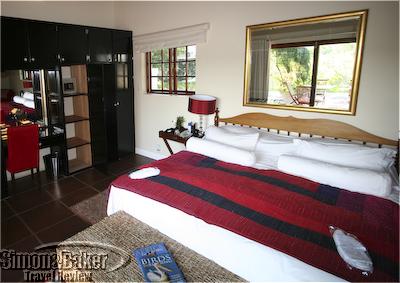
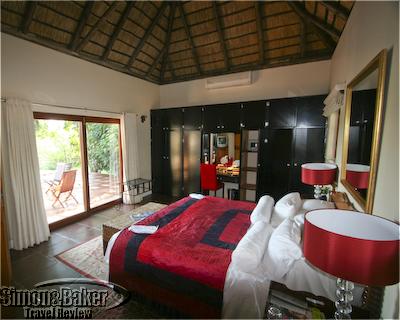
The bedroom of our suite at Cybele
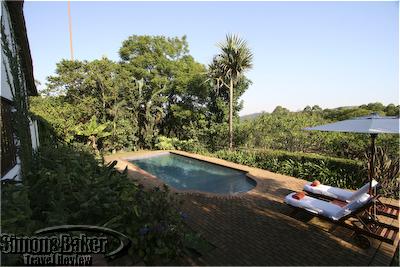
Our suite had a private terrace with a pool
During a three week game viewing trip to Botswana and South Africa earlier this year we included a two-day break at Cybele Forest Lodge and Spa, a secluded property near the http://simonandbaker.com/kruger. While there we relaxed in the landscaped forest environs, enjoyed couples spa treatments and yummy meals.
We liked the quiet elegance of this Relais and Chateaux property with friendly and service oriented staff and will recommend it to friends searching a spa oriented getaway property between Johannesburg and the http://simonandbaker.com/kruger. Click here to read a dedicated article about the Cybele Forest Lodge and Spa.
by Editor | Apr 28, 2008 | Ecotourism, Luxury Travel
Article and photos by Elena del Valle

Glen Wilsey, our guide, and the swamp buggy
On one of those rare chilly South Florida mornings recently I drove to the Everglades to experience the Exclusive Swamp Buggy Eco-Tour, the new 90-minute escorted private eco-tours at Billie Swamp Safari. During the tour, Glen Wilsey, an alligator wrestler turned guide, showed us his corner of the universe.

Billie Swamp Safari is between Ft. Lauderdale and Naples in South Florida

This little fellow had sharp teeth
Before we set out to discover the Big Cypress Reserve, the part of the Everglades we were in, Glen introduced us to a small reptilian friend for a few minutes of show and tell. Next we headed to the Swamp Water Cafe where we shared a traditional Seminole sampler platter: fried frog legs, fried alligator, fried catfish, fried bread and hearts of palm.
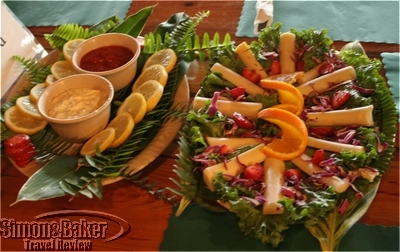
Seminole hearts of palm
After we tasted the snacks, we boarded the homemade swamp buggy. Smaller than the full sized vehicles for the 32-person regular tours, the swamp buggy can accommodate five passengers in the elevated back and a sixth in the passenger seat next to the driver.

We were lucky to spot this yellow rat snake during our drive

Our swamp buggy drove easily over water
During our drive, we saw local and exotic flora and fauna including sable palms, resurrection ferns, oak and maple trees as well as vultures, glossy ibis, black feral pigs, bison, ostrich, yellow coral snake, and Asian water buffalo,
Billie Swamp Safari, owned by the Seminole Tribe of Florida, is deep in the heart of the Florida Everglades and has 650,000 visitors a year. There are 3,300 Seminoles living in six reservations in Florida.
by Editor | Oct 22, 2007 | Ecotourism, Luxury Travel

The dock at Buddy Dive in Bonaire
Diving options and destinations abound across the globe. Warm water diving destinations are fewer but there are still many to choose from. Having sampled a few we favor Bonaire for several reasons: the island itself holds a charming appeal, friendly locals, lots of shore dive spots, numerous dive operators to choose from and nearby dive locations within a 15 to 30 minute boat ride. Other advantages include a southern Caribbean location away from the hurricane belt, an arid climate with limited rainfall, an on island recompression chamber in case of an accident, as well as protected and pristine tropical waters to showcase the best of the island’s underwater world.
Although the visibility was not 100 feet, as we read in many promotional websites and brochures before visiting the island, the water was clean and with minimum signs of human visitors. One of the reasons for the excellent condition of the marine environment is that all the area surrounding the island up to a depth of 200 feet has been a protected marine park for 25 years.
Locals care for their marine park and instruct visiting divers about the importance of protecting the environment. For example, first time visitors and those who have not been on the island in a year or longer are required to have an orientation with a local diver and pay for a marine park tag. We also noticed the dive staff we went out with were always protective of the coral reef and sea life when diving and reminded everyone on the dive boats to do the same.
For dive courses, relaxed diving, small groups, personalized attention, and resort shore diving we loved Great Adventures Dive & Water Sports Bonaire at Harbour Beach Village Club. On our last visit, we enjoyed many a shore dive including a brief sunset dive just off the beach. There were plenty of opportunities where we were one of a handful of guests on the dive boat. Several times we were the only two divers to go out. We enjoyed those especially because it was like chartering a private dive. Staff members were experienced and knew the area and dive sites well. They were helpful and friendly.
We also liked Buddy Dive at the Buddy Dive Resort. There was a constant buzz of activity, a healthy selection of dive options, courses and packages, and a well stocked dive shop. They catered to guests staying onsite, luxury property renters who only needed tank replacements and off site guests like us who needed an island orientation, were taking a course or fine tuning their diving skills. In spite of the many guests and staff, one of the characteristics we enjoyed most at Buddy Dive was the personal touch and service oriented staff.
by Editor | Oct 8, 2007 | Ecotourism, Luxury Travel
By Elena del Valle
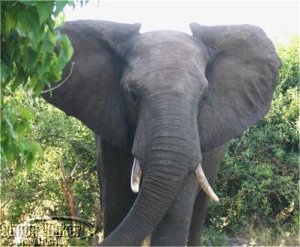
An elephant at the Chobe Safari Lodge
Visitors to Botswana are almost guaranteed an elephant sighting
For those thinking of going on safari in a remote area, this might be a good time to visit or revisit Botswana. The small and sparsely populated country is best known as the largest producer of gem quality diamonds in the world. The landlocked country, home to exclusive and remote safari camps and one of the largest herds of free roaming elephants in Africa, is making travel and tourism a priority.
Thanks in part to its mining wealth, this southern Africa country took the time and effort to develop its travel and tourism industry by planning ahead and focusing on luxury. Setting aside a large portion of its land for game viewing, the Botswana government issued concessions to private companies to establish temporary luxury oriented camps with minimum impact on the environment.
Although foreign companies and workers were allowed in initially, the government places strong emphasis on recruiting and training locals. The goal is for the luxury game viewing concessions to eventually be managed by Botswana natives. As part of the process, thousands of families were relocated from their ancestral homelands to make way for the game viewing reserves. At the same time, promising youth who grew up in farming and fishing families, were hired and placed on the fast track to training and promotion opportunities. This formula, though at times bumpy, seems to be paying off for Botswana.
The future of tourist travel in Botswana is bright according to the Tourism Satellite Accounting (TSA) report produced by the World Travel & Tourism Council (WTTC) and commissioned by the Government of Botswana and the Botswana Tourism Board. The report estimates the travel and tourism industry in Botswana will generate $1.6 billion in economic activity.
Over the next ten years Botswana’s travel and tourism industry is expected to achieve an annualized real growth of 5 percent, exceeding the world average at 4.3 per cent and the Sub-Saharan African average at 4.5 percent. According to the forecasts detailed in the report, travel and tourism already contributes over 10 percent of total employment and 16 percent of the non-mining gross domestic product of the country.
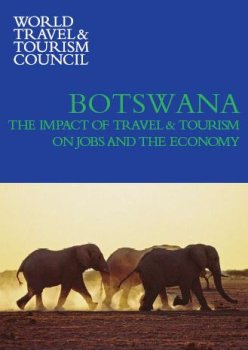
World Travel & Tourism Council report on Botswana
“Although this growth is positive and the country is one of the Africa’s most exciting travel destinations, it remains relatively unknown and is heavily dependent on intraregional tourists. Indeed, as far as long-haul markets are concerned, it is probably Africa’s best-kept secret,” said Jean-Claude Baumgarten, World Travel & Tourism Council. ”However these forecasts show that, with the right policy framework, Botswana has the potential not only to expand rapidly but also to significantly broaden its tourism product base, appealing to much a wider range of tourist tastes and budgets.”
Baumgarten believes the Botswana government has set many examples on how to run a country’s travel and tourism industry and preserve its environment, culture and heritage. Onkokame Kitso Mokaila, Botswana’s Minister of Environment, Wildlife and Tourism indicated that travel and tourism will be a priority for the country’s economy, which can no longer depend on its mining industry.
“This report comes at a crucial point for Botswana and will help the government to reach the highest level of potential that can be realized,” said Kitso Mokaila. “Travel and tourism will contribute enormously to the country’s economy and we are committed to running a conscious campaign to publicize the strategic role and benefits of tourism in order to stimulate a more positive perception to the wider public.”
The World Travel & Tourism Council is the forum for the chairs and chief executives of 100 prominent travel and tourism companies. The Council works with industry and governments to raise awareness of the strategic importance of travel and tourism, one of the world’s largest industries employing more than 230 million people and generating over 10 per cent of world GDP.
To find out about our travel teams experiences in Botswana click on the hyperlinks Botswana, Camp Okavango, Chobe Safari Lodge, Deception Valley Lodge, Kings Pool Camp, Kwara Camp, Kwetsani Camp, Lebala Camp, Nxai Pan Reserve/John Chase Safari, Savute Safari Lodge, and Xigera Camp.
by Editor | Aug 30, 2007 | Luxury Travel
Article and photos by Josette King

Earlier this week I attended the media preview of the world premiere exhibition “Lucy’s Legacy: the Hidden Treasures of Ethiopia,” scheduled to open August 31, 2007 at the Houston Museum of Natural Science. Six years in the planning, the exhibition is a collaborative effort of The Houston Museum of Natural Science, the Ministry of Culture and Tourism of the Federal Democratic Republic of Ethiopia and the Ethiopian Exhibition Coordinating Committee.

Ethiopian Orthodox Christian triptychs 17th -19th century
The exhibition includes the original remains of the 3.2 million-year-old hominid known as Lucy, the oldest and most complete adult human ancestor ever retrieved from African soil. Other important paleoanthropological artifacts are also represented as well as a wide selection of objects exploring Ethiopia’s recorded human history. These include illuminated manuscripts and processional crosses from the Ethiopian Orthodox Church, a selection of Korans from the holy city of Harar, and the first coins minted by an indigenous African civilization.

Early Koran from the holy city of Harar
In addition to the awe I felt viewing Lucy, I especially enjoyed the colorful and intricate Christian Orthodox triptychs and the exquisite calligraphy of the antique Korans. After its premiere in Houston, Lucy’s Legacy will tour to several additional destinations. The itinerary, yet to be finalized, will be revealed later this year.
























